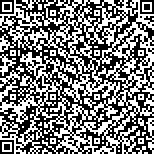朱嘉瑜,于海燕,万祯漪,等.老年2型糖尿病周围神经病变患者三维步态分析[J].中华物理医学与康复杂志,2022,44(12):1090-1094
扫码阅读全文

|
| 老年2型糖尿病周围神经病变患者三维步态分析 |
|
| |
| DOI:10.3760/cma.j.issn.0254-1424.2022.12.007 |
| 中文关键词: 2型糖尿病 周围神经病变 三维步态分析 足底压力 |
| 英文关键词: Type 2 diabetes Diabetes mellitus Peripheral neuropathy Gait Plantar pressure |
| 基金项目:无锡市科技局社会发展指导项目(CSZON1725);无锡市卫计委项目 (MS201703) |
|
| 摘要点击次数: 4070 |
| 全文下载次数: 4431 |
| 中文摘要: |
| 目的 探讨老年2型糖尿病周围神经病变患者的三维步态分析特点。 方法 选取符合纳入标准的60岁以上的2型糖尿病周围神经病变患者20例(神经病变组)和无周围神经病变的2型糖尿病患者20例(糖尿病组),并招募年龄相匹配且无2型糖尿病病史的健康志愿者20例(健康对照组)作为研究对象,使用瑞典Qualisys动作捕捉系统对3组受试者进行三维步态测试,采集并分析其步长、步速、步宽、步频、步幅、双足支撑相时间、单足支撑相时间、足底峰值压力及时间等数据特点。 结果 神经病变组的步长、步速、步频、步幅均较糖尿病组和健康对照组下降(P<0.05);神经病变组与糖尿病组和健康对照组相比较,双足支撑相时间延长,单足支撑相时间缩短,且差异均有统计学意义(P<0.05);神经病变组足底第一峰值压(P1)和第二峰值压(P2)、第二峰值出现时间(T2)较糖尿病组和健康对照组增加,且差异均有统计学意义(P<0.05)。 结论 老年2型糖尿病周围神经病变患者出现明显步态异常,步行稳定性下降,足底压力增强,足底受压时间增加。 |
| 英文摘要: |
| Objective To explore the features the gait of elderly persons with type 2 diabetes and peri-pheral neuropathy. Methods Twenty patients no less than 60 years old with type 2 diabetes and peripheral neuropathy (DPN) formed a DPN group, while 20 counterparts with type 2 diabetes but without peripheral neuropathy composed the DM group, and another 20 healthy counterparts served as a control group. The three groups were tested using the Swedish Qualisys motion capture system and their walking speed, step length, step width, stride frequency and stride length, bipedal foot support phase time, single foot support phase time, peak plantar pressure, and regional-holding time were collected and compared. Results The average walking speed, stride length and stepping frequency of the DPN group were all significantly lower than the other 2 groups′ averages. Their bipedal support phase was significantly longer, but their single foot support phase time was significantly shorter. And in the DPN group the average first and second peak plantar pressures and the second peak pressure time were significantly greater than the other groups′ averages. Conclusions Elderly patients with type 2 diabetes and peripheral neuropathy have significant gait abnormalities, decreased walking stability, as well as increased plantar pressure and plantar compression time. |
|
查看全文
查看/发表评论 下载PDF阅读器 |
| 关闭 |
|
|
|